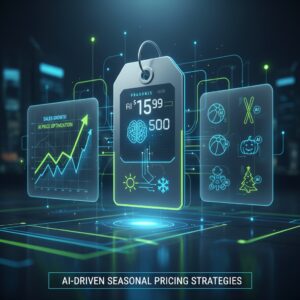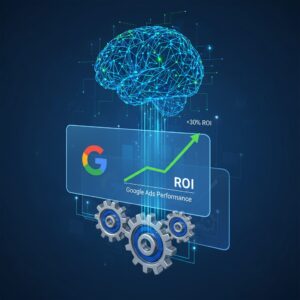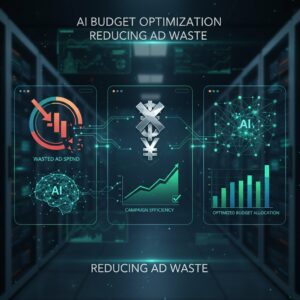
Pricing seasonal products has always challenged small business owners. You know the struggle. Set prices too high and inventory sits unsold. Price too low and you leave money on the table.
I’ve watched countless businesses miss profit opportunities during peak seasons. The traditional approach involves gut feelings, competitor monitoring, and basic markup formulas. This method works until it doesn’t.
AI changes everything about seasonal pricing. The technology analyzes patterns you can’t see and makes adjustments faster than any human team.
Why Traditional Pricing Methods Fall Short
Your current pricing strategy probably relies on last year’s data. You look at what sold, what didn’t, and adjust accordingly. This backward approach misses critical market shifts.
Market conditions change rapidly. Customer preferences evolve. Competitor strategies shift overnight. Weather patterns affect demand unpredictably.
Consider a beach equipment retailer. Last summer’s pricing worked perfectly. But this year a major competitor opened nearby. Your old strategy becomes obsolete instantly.
Traditional methods also ignore micro trends. You might notice monthly patterns but miss weekly fluctuations. Daily variations in demand go completely untracked.
Manual price adjustments consume valuable time. You or your team spends hours updating prices across multiple channels. By the time you finish, market conditions have already changed.
The human brain can only process limited variables simultaneously. AI processes thousands of data points in seconds. This capability transforms pricing from guesswork into science.
How AI Analyzes Seasonal Demand Patterns
AI examines your historical sales data with incredible precision. The system identifies patterns invisible to human analysis. It recognizes correlations between seemingly unrelated factors.
Weather data integration provides powerful insights. AI connects temperature changes to specific product demand. A swimwear business benefits enormously from this capability.
The system tracks competitor pricing in real time. You gain instant awareness when competitors adjust their strategies. AI recommends counter moves before you lose market share.
Customer behavior analysis reveals buying triggers. AI identifies which customers buy impulsively versus those who research extensively. This knowledge allows segmented pricing strategies.
Social media sentiment analysis adds another layer. AI monitors conversations about seasonal products. Growing excitement signals optimal moments to increase prices.
Search trend analysis predicts demand surges. When people start searching for winter coats, AI detects the pattern early. You adjust inventory and pricing before competitors react.
AI also factors in economic indicators. Employment rates, consumer confidence, and spending patterns influence seasonal purchases. The system weighs these variables automatically.
Local event calendars feed into the analysis. Festivals, holidays, and community events drive seasonal demand. AI incorporates these factors into pricing recommendations.
I implemented an AI pricing system for a garden supply business. The results surprised everyone. Revenue increased 23% during spring season compared to previous year.
The system identified that Friday afternoons showed highest purchase intent. We raised prices 8% during this window. Customers still bought enthusiastically because demand peaked then.
Implementing Dynamic Pricing for Maximum Profit
Dynamic pricing means prices change based on current conditions. This strategy maximizes revenue throughout the entire season.
Start by connecting your inventory management system to AI tools. The integration allows real time data flow. Accurate inventory counts prevent stockouts and overstock situations.
Set pricing boundaries to maintain brand integrity. AI needs guardrails. Define minimum prices that protect margins and maximum prices that preserve customer relationships.
Test AI recommendations before full implementation. Run parallel systems initially. Compare AI suggestions against your traditional method. This approach builds confidence in the technology.
Product categories require different strategies. High demand items can handle more aggressive pricing. Lower demand products need conservative approaches to move inventory.
Early season pricing should balance customer acquisition and profit. AI helps find this equilibrium. The system weighs long term customer value against immediate margin.
Mid season represents peak profit opportunity. Demand peaks and customers show less price sensitivity. AI identifies the exact moment to maximize prices.
Late season requires inventory clearance focus. AI calculates optimal markdown timing. The system balances remaining inventory against time left in season.
A holiday decoration business I advised implemented dynamic pricing last year. They started with conservative AI recommendations. Confidence grew as results exceeded expectations.
Their Christmas lights sold out three days before the holiday. Previous years always left excess inventory. The AI system gradually raised prices as stock depleted. Final margins improved 31% over the prior year.
Geographic pricing variations deliver additional value. AI identifies regional demand differences. A snow shovel sells differently in Boston versus Atlanta.
Time based promotions work better with AI guidance. The system determines optimal discount timing. Flash sales happen when they create maximum impact.
Bundle pricing becomes more sophisticated with AI. The technology identifies which product combinations appeal to specific customer segments. Cross selling revenue increases significantly.
Loyalty program members can receive personalized pricing. AI analyzes individual purchase history. Targeted offers increase repeat purchase rates.
Monitor AI performance continuously. Review weekly reports showing pricing decisions and outcomes. Adjust parameters based on actual results.
Customer feedback provides essential insights. Watch for price complaint patterns. AI optimizes profits but shouldn’t damage customer relationships.
Seasonal transitions need careful management. AI helps determine when to shift from one season’s products to the next. Timing these transitions perfectly maximizes annual revenue.
Integrate email marketing with dynamic pricing. Send personalized offers based on AI insights. Individual customers receive prices matching their purchase probability.
Your competition probably hasn’t adopted AI pricing yet. This technology provides a significant temporary advantage. Early adopters capture market share before others catch up.
The investment in AI pricing tools pays for itself quickly. Most small businesses see positive ROI within one season. The technology becomes more valuable as it learns your specific business patterns.
You don’t need a technical background to implement these systems. Modern AI pricing platforms offer user friendly interfaces. Support teams help with initial setup and ongoing optimization.
Start small if the full implementation feels overwhelming. Apply AI to your top selling seasonal category first. Expand to additional products as comfort and expertise grow.
Your seasonal pricing strategy determines annual profitability. AI removes guesswork and maximizes every selling opportunity. The question isn’t whether to adopt this technology but how quickly you can implement it.
The businesses thriving in coming years will be those embracing AI tools now. Your competitors are evaluating these same technologies. Moving first creates advantages that compound over time.
Please check our Business Tips https://thoughts.business/category/business-tips/
Please check our partner site – Why Invest? https://whyinvest.info/





